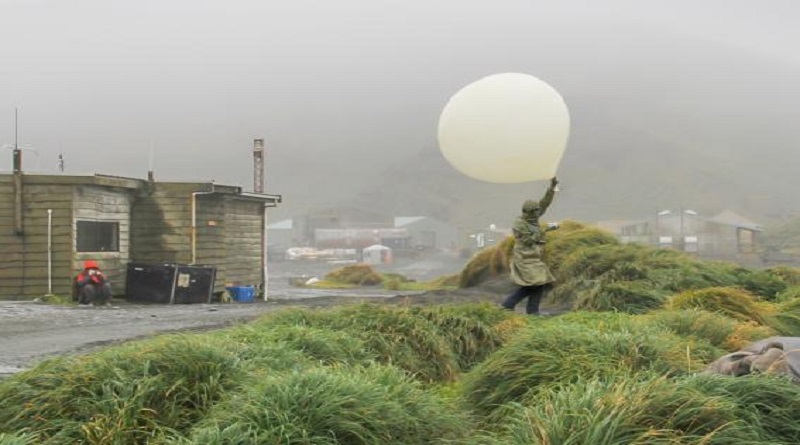Weather balloons are important part of Global Observing System
Weather balloons are an important part of the Global Observing System which underpins weather forecasts and climate monitoring.
Millions of observations are gathered worldwide every day: from space by over 50 satellites; from the ocean by 400 moored buoys, 1 250 drifting buoys and 7 300 ships; by 4 000 aircraft from around 40 commercial aircraft companies, 7 300 ships and 10 000 automated and land-based observing stations, and by nearly 1000 weather balloons equipped with radio-sondes.
Radiosondes, which act as upper-air stations are attached to free-rising balloons and released simultaneously from almost 900 locations worldwide. Over two thirds of the stations report observations at 0000UTC and 1200UTC. Between 100 and 200 stations make observations once per day.
The balloon flights last for around 2 hours, making measurements of pressure, wind velocity, temperature and humidity from just above ground to heights of up to 35 km. They can travel many kilometers before the balloon bursts and falls back to earth under a parachute
Weather balloons have been a very important part of the global observing network for decades as they are the primary source of data above the ground. They provide valuable input in real-time for computer forecast models, local data for meteorologists to make forecasts and predict storms, climate monitoring and data for research to better understand weather and climate processes. Computer forecast models which use weather balloon data are used by all forecasters worldwide.
The balloons themselves are made of natural rubber latex or a synthetic latex based on polychloroprene. Synthetic latex balloons have a much slower rate of decomposition than natural rubber latex ones and use of the latter is therefore preferred. Balloons are filled with either hydrogen or helium. The sides are about 0.051 mm thick before release and will be only 0.0025 mm thick at typical bursting altitudes! Their typical weight is 500 g, but can vary from 10 g to 3000 g, while their payload is up to 1000 g (for the largest balloons).
On release the balloons measures less than 2 meters wide during the ascent the air pressure around the balloon decreases allowing the gas in the balloon to expand as they rise to about 6 meters in diameter!
The radiosonde attached to the balloon will often endure temperatures as cold as -139°F (-95°C), relative humidities from 0% to 100%, air pressures only a few thousandths of what is found on the Earth’s surface, ice, rain, thunderstorms, and high winds.
A transmitter on the radiosonde sends the data back to tracking equipment on the ground every one to two seconds. By tracking the position of the radiosonde, we can also calculate wind speed and wind direction. The radiosonde is powered by a small battery.
In ocean areas, radiosonde observations are taken by about 15 ships, which mainly ply the North Atlantic, fitted with automated shipboard upper-air sounding facilities (ASAP). A subset of upper-air stations also comprise the GCOS Upper-air Network (GUAN).
There is constant research into improving radiosondes to ensure they can make accurate, consistent measurements. However stable, consistent measurements are vital for the climate record and we need to ensure that there are no breaks in data and that the data itself is not adversely affected by a change in technology.
There is a constant effort to produce environmentally friendly radiosondes, balloons and flight trains, by identifying materials that both meet the functional requirements and are biodegradable.
To further strengthen the weather balloon network and the surface observing network, and provide even more data to the weather forecast models, including to fill the gaps in the least developed Countries and Small Island Developing States, WMO embarked into the Global Basic Observing Network (GBON), supported by the Systematic Observations Financing Facility (SOFF).




